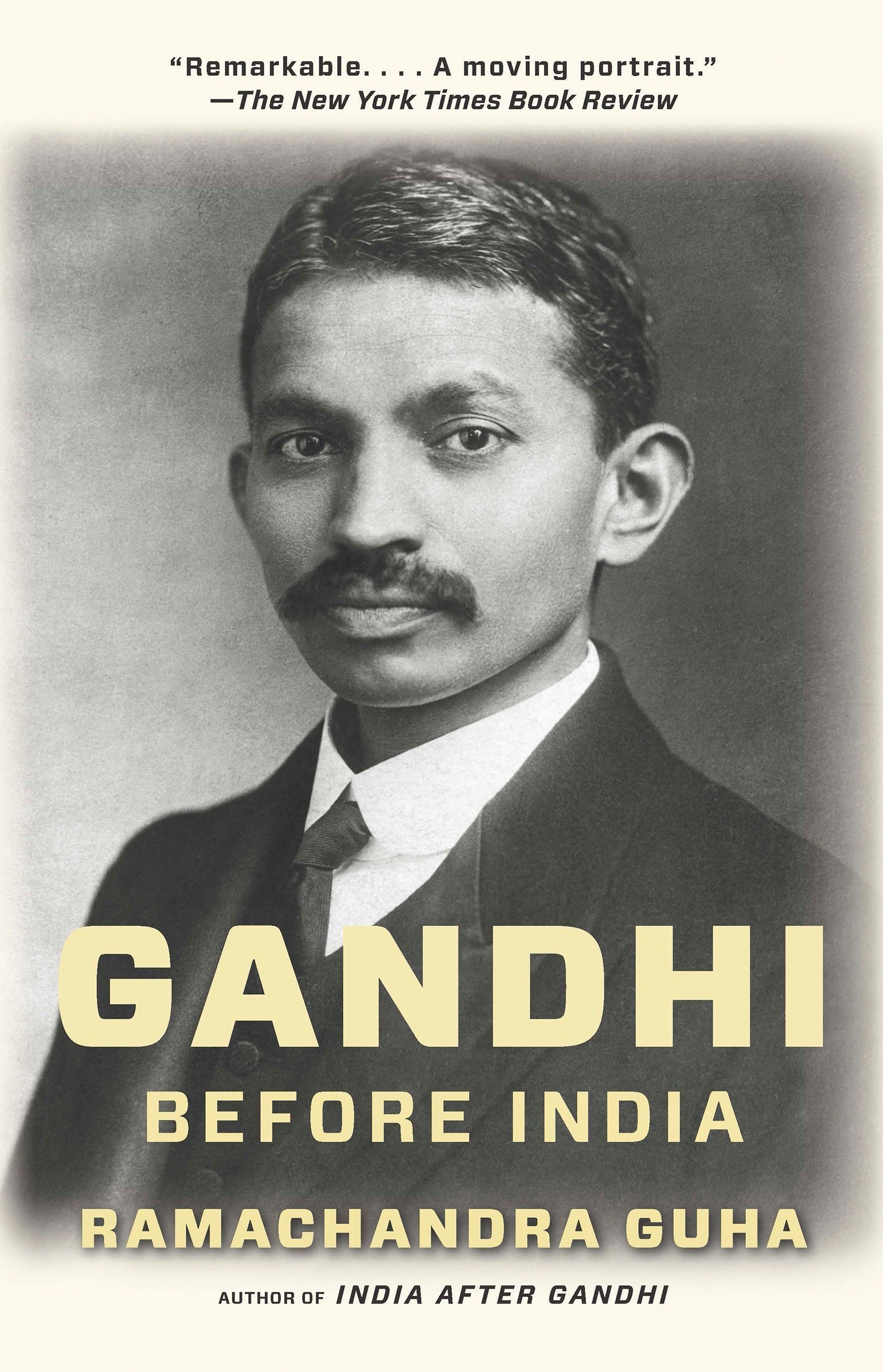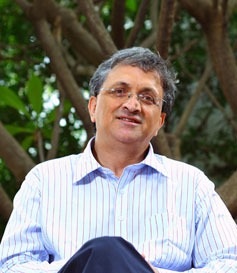Gandhi Before India Summary
6 min read ⌚
 Even foreigners with absolute zero knowledge of the Indian culture and history, have heard of Gandhi and his peaceful revolution.
Even foreigners with absolute zero knowledge of the Indian culture and history, have heard of Gandhi and his peaceful revolution.
His highly unusual style of handling the political turmoil in India, has become the epitome for freedom.
Let’s not reveal everything, yet!
Who Should Read “Gandhi Before India”? And Why?
It is sad that these types of books are tough to summarize because they have this amazing storyline. We did our best, but we believe that reading this masterpiece is in everyone’s best interest.
“Gandhi Before India” is definitely an eye-opening book that deserves every respect from the world community.
We don’t want to label Gandhi anything because in doing so, we will conceal the only thing that Guha is trying to unravel – the unbiased review!
 About Ramachandra Guha
About Ramachandra Guha
Ramachandra Guha is no stranger in Indian society.
As a historian, columnist for Hindustan Times and The Telegraph, and an author who surely loves to conduct research on numerous topics, he has proven its worth.
“Gandhi Before India PDF Summary”
First of all, who was Gandhi? Why does the world reckon that he is one of the most prominent figures of the 20th century?
In all honesty, it’s not easy for a person without noble origins to elevate him/herself to such a high level. He was born in a small village in 1869, right about the time the British influence had reached its peak.
As we mentioned, he distinguished himself for his non-violent revolt against British colonization of India and inspired many conquered countries to rise against the oppressors. The Arab Spring is one example, followed by Nelson Mandela, Martin Luther King, The 13th Dalai Lama, etc.
The worldwide revolution often portrayed Gandhi as a symbol of hope, that doesn’t endorse violence of any kind. Egyptians, Tunisians, and other communities carried Gandhi’s picture during their rallies to showcase that the idea of fairness underpins democratic ideals.
In 1948, Mohandas Karamchand Gandhi was shot by Nathuram Godse (A radical right-wing supporter) at close range and died shortly afterward. His legacy remains embedded into the minds and hearts of culturally diversified Indians and worldwide supporters.
According to some westerners, and probably Indians, the murder of Gandhi was used as a political weapon against Hindu-Indians who didn’t recognize Pakistan’s sovereignty, among other things.
Their actions became synonymous with hate, something that Nehru enforced as Gandhi’s political heir.
A throwback to an era, when justice-seekers were imprisoned for publicly expressing their ideas. From 1903, up until his death in 1948, Gandhi became India’s father and his remarks on Indo-British society were published in newspapers in both Gujarati and English.
This book tries to unveil Gandhi’s real identity, the one that is behind the curtain and often neglected. As a matter of fact, Ramachandra Guha is hailed as one of the most prominent historians and has the credibility to question the portrait of Indo society.
In addition, he reminds us that skepticism altogether is a powerful way of finding the truth, which in many cases is concealed. The depiction of Gandhi must be examined and perceived impartially.
Gandhi from all Angles
The central premise of this eye-opening starts by explaining that both Left and Right extremists didn’t like Gandhi’s symbolic vision.
On one end, Maoist had destroyed Gandhi’s statues all over the country, while the Right-Wingers supported a theocratic society. Evidently, not all people who opposed Gandhi’s ideology were British, or Afrikaans. There were a lot of Muslims, Hindus; you name it.
While residing in South Africa, Gandhi coined a term “Satyagraha” which in layman’s terms means something like “truth-force.” The same reform movement and ideology was later applied in India. His time in Natal and Transvaal also shaped the nationalist movement in India, because he had time to contemplate on many things.
This mass disobedience technique, created by Gandhi had a task to stand up to the oppressors, and show no interest in filling their pockets.
According to Gandhi, all people should receive the same amount of rights regardless of their status and cultural background. During his stay in Afrika, he realized that discrimination is the new tool of modern enslavement and something that had to be stopped.
Years later, this ideology became the driving force in post-British Socialist India.
The author clearly outlines Gandhi’s four forces, which characterize him as a leader:
-
- Freedom Fighter
-
- Reformist
-
- Religious Pluralist
- Prophet
At the age of 19, Mahatma Gandhi went to London, and it was also the first time outside his native Kathiawar. It helped him to shape his views, see the Western world, and draw his own conclusions on how India should be governed.
The adventure in London
Probably the two most renowned Indians in London at that time were Dadabhai Naoroji and Abdul Karim. Naoroji was a trade agent who moved to London a couple of decades ago, while Abdul was a Muslim who worked on Queen Victoria’s staff.
Mohandas received his first lecture on English etiquette by Dr. Mehta who stated the following:
Do not ask questions as we usually do in India on first acquaintance; do not talk loudly; never address people as sir while speaking to them as we do in India; only servants and subordinates address their masters that way.
Afterward, he went to visit a local Inner Temple, located west of the city. Gandhi sent a letter to his brother, complaining about the weather and also mentioning that he doesn’t have any urges for eating meat or consuming alcohol.
Upon arriving at Bombay, Gandhi was informed by his brother, that their mother died a few months ago. Although he was sad, Gandhi didn’t have much time to lose. In the first couple of days, he enjoyed the company of Raychand – Dr. Mehta’s relative.
They talked about a lot of things related to religion, culture, beliefs, and tried to find a link between them. Decades later, Gandhi shared that Raychand had a massive influence on him as if he was his intellectual lodestar.
When the Boer war broke out, Gandhi, shockingly to most people, cheered for the British. From this standpoint, we can say that he was an imperialist with regards to his cultural belief, which converted a bit later.
In the early 1900s, his main efforts were fixated at South Africa, their way of life and so forth. As a lawyer and a person of stature, he provided services for many clients in Johannesburg and other cities. In the meantime, he began to hatch a plan on how to improve the rights of Indians in the Transvaal area.
This whole mess led to a political impasse, which was partially supported by certain media outlets. From such vantage point, it’s crystal clear that Gandhi was trying to find the perfect way to express himself through meditation, celibacy, strict diet, etc.
The end of the 19th Century and the beginning of the 20th were tough for him. For 10 years he roamed around visiting Bombay, Calcutta, Madras, and other cities but never broken a single word with a peasant whose plight was evident.
We also come to an understanding that in 1906, Gandhi had a few encounters with Winston Churchill and he became increasingly aware of the modern predicament. He even gave answers that surprised Churchill on what principles does he believe are crucial for achieving a modern society.
His legal career, at the time, was on hold, due to the fact that he was engaged in forming his political views. Upon his return to South Africa, Gandhi became increasingly interested in people’s opinion overall, which will later serve as the backbone for his ideology of social structure.
His sudden return to Transvaal was basically a political decision, where he started a Political Journal named “Indian Opinion.” That was actually the turning point in his life!
The opinion of the oppressed must be heard, and that’s was a real impetus for launching a battle against exploitation.
One cannot say that Gandhi wasn’t a remarkable figure in the modern world. He was indeed a reformist, a peaceful revolutionary who managed to see beyond races, and cultures.
His contribution to equality and development of Third-World countries remains a fact to this day.
We firmly believe that the author wanted merely to imply that questioning the other side of the story is beneficial in order to understand the big picture.
Like this summary? We’d Like to invite you to download our free 12 min app, for more amazing summaries and audiobooks.
“Gandhi Before India Quotes”
Social reform was as important as political emancipation; mindful of the sentiments of Muslims. Share on X The colonists feared that the few hundred passengers waiting off the coast were the beginnings of large-scale immigration that would decisively alter the demographic profile of Natal. Share on XOur Critical Review
Who doesn’t want to know the story behind Gandhi rise to power? This doesn’t mean that Gandhi sought dominance, but eventually he became a central figure in the Post-British society.
This book is a pure gold, and we believe that everyone should find some time to read it.
Emir is the Head of Marketing at 12min. In his spare time, he loves to meditate and play soccer.


 About Ramachandra Guha
About Ramachandra Guha




